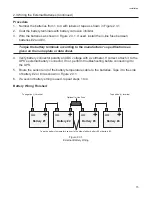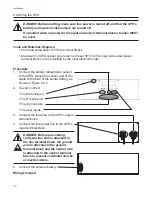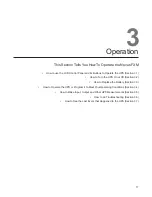
2
Introduction
1.1.1 UPS Safety Checklist
This Uninterruptible Power Supply (UPS) is to be installed by people trained in
the safe use of high-energy power supplies and their batteries. Also assumed is
knowledge of the local electrical code(s) and their safe application.
DANGER: NEVER let water from rain, a hose, tap or a sprinkler’s output, road
splash or other water sources enter the UPS to prevent accidental shorts,
shocks or electrocutions.
Do not work alone under hazardous conditions.
Read this manual. If you have any questions about safe installation, operation or
maintenance, contact Alpha Technologies’s customer service department.
Carefully unpack the components. Report any shipping or other damage at once.
Always
assume electrical connections or conductors are live. Turn off all circuit breakers
and double-check with a voltmeter before performing installation or maintenance.
Before installation, verify the input voltage and current requirements of the load are met by
the UPS’s output (
See
specifications). Verify the line voltage and current meet the UPS’s
input requirements.
Place a warning label on the utility panel to tell emergency personnel a UPS is installed.
Use proper lifting techniques when lifting or moving the UPS or its components.
This UPS has more than one live circuit. AC power may be present at the outputs even if
the UPS is disconnected from line or battery power.
This UPS can be operated to a maximum operating temperature of 55°C.
Also see
the
specifications section for temperature ratings.
At high ambient temperature conditions, the UPS’s surface can be very hot to the touch.
There is a Lithium battery inside the UPS. There is a danger of an explosion if it is
incorrectly replaced. Replace it only with the same type or an equivalent battery as
recommended by the manufacturer. Dispose of the old battery as instructed by the
manufacturer.
. Safety Checklists
Summary of Contents for 500
Page 2: ...Power Alpha Technologies ...







































